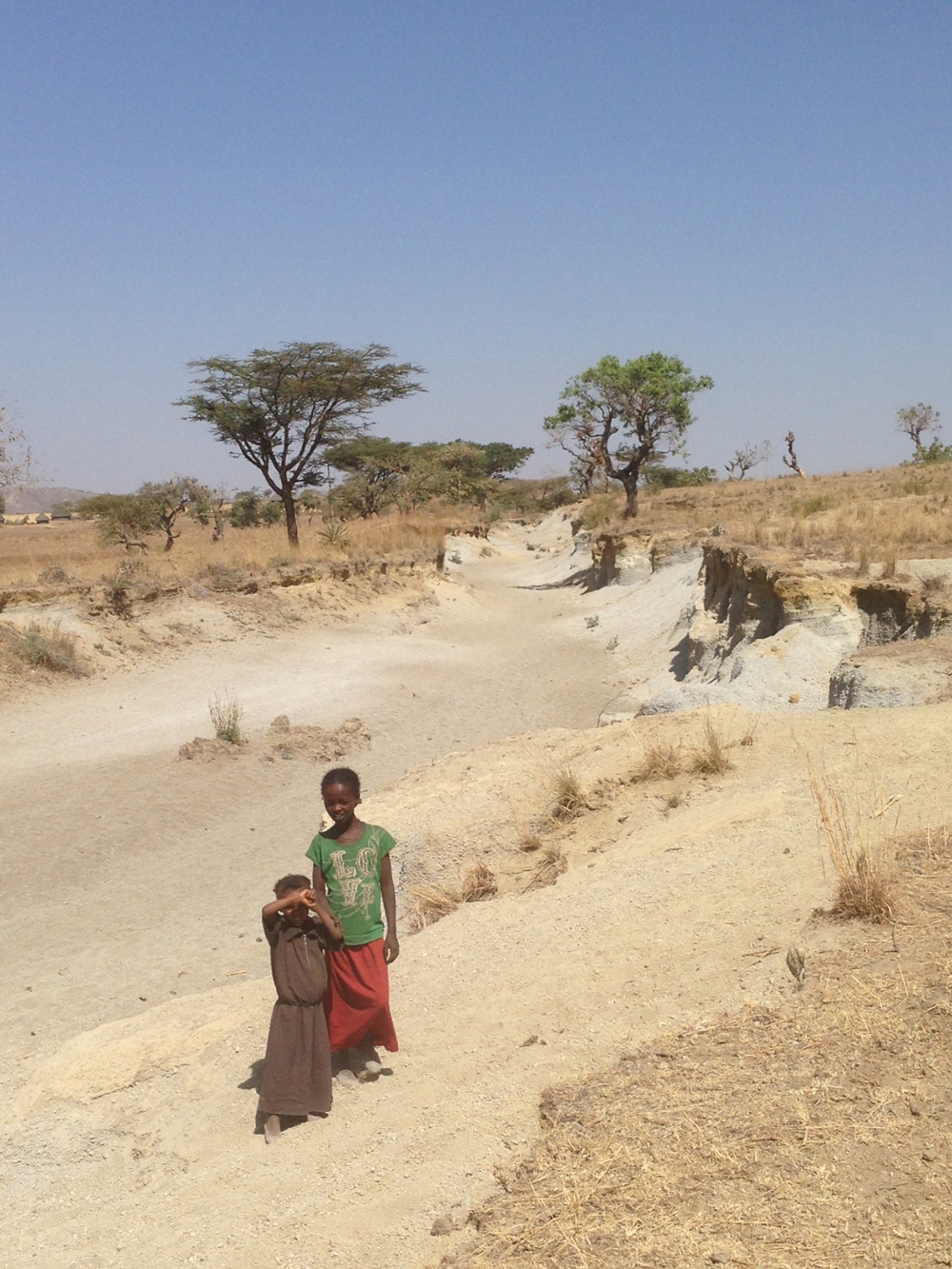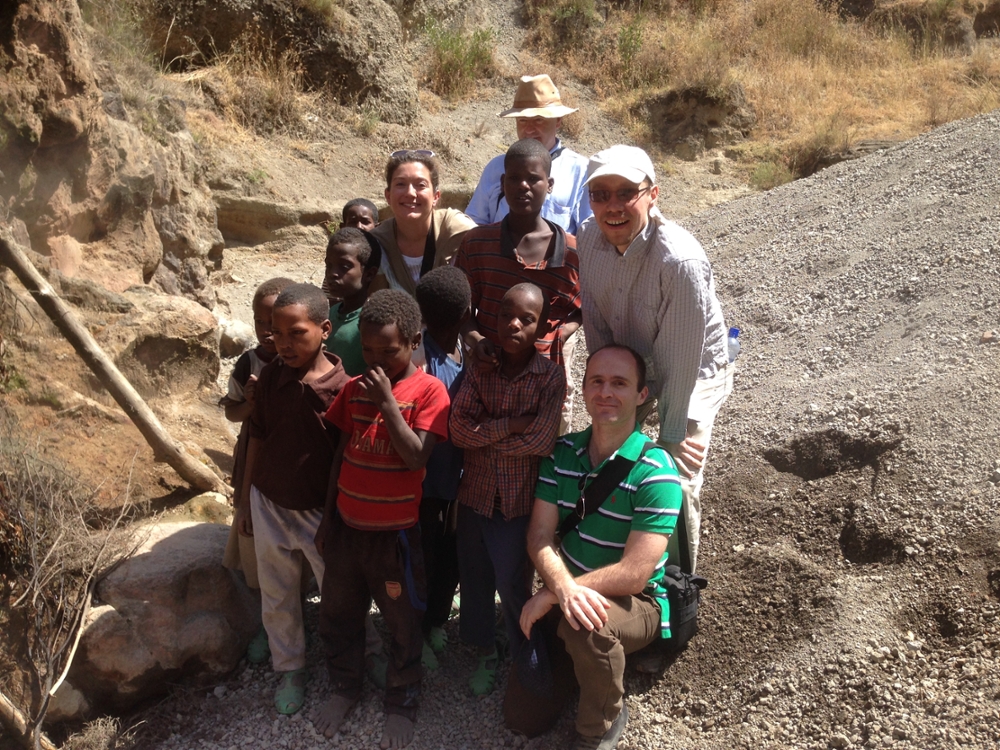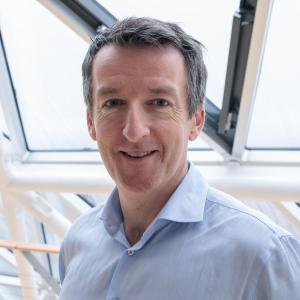A ground-breaking fund attracts private investment for climate and development projects
A few years ago, Alastair Vere Nicoll trekked across Antarctica, recreating the adventure of pioneering polar explorer Roald Amundsen. Now he’s standing on a spot considerably hotter than those icy southern wastes, and he’s part of a project that’s as ground-breaking as the great Norwegian’s journey to the South Pole.
Beneath his feet, 250 kilometres south of Addis Ababa, is the Corbetti volcanic caldera, part of the Ethiopian Rift. A happy coincidence of geological features sends water through subterranean fissures in the earth where, heated by the volcanic activity around it, the water turns naturally into steam. Vere Nicoll and his colleagues aim to harness the power of that steam to create electricity. “It’s a coal-fired power station without the coal,” he says.
In the dustbowl over the caldera, the renewable energy investment company, Berkeley Energy, that Vere Nicoll co-founded is building Ethiopia’s first independent power project. The pilot stage will be completed in the next two years. Within eight years, Vere Nicoll expects the Corbetti plant to have a capacity of 500 megawatts. That’s approximately a quarter of the country’s total electricity usage and enough to supply ten million Ethiopians. “We’ve done ground-breaking deals in various emerging markets, but this is the most significant project any of us involved will ever work on,” he says. “Really, in our entire careers.”
Vere Nicoll’s cutting-edge project is typical of the work of one of his main investors, the Global Energy Efficiency and Renewable Energy Fund (Geeref). The fund started with a big chunk of public money which it used to entice private investors. The private money followed, as Geeref managers hoped it would—even though they planned to invest in projects that typically are seen as risky.

A cushion against risk
Using the public funds to give private investors a cushion against risk, Geeref has built a unique portfolio of renewable energy investments in developing countries. It has been so successful, Geeref managers will soon be launching a second, bigger fund. “Nobody else has done anything like this in the world,” says Christopher Knowles, head of the climate change and environment division at the European Investment Bank.
Geeref is managed by the European Investment Bank from a single, bustling room in an airy corner of its Luxembourg headquarters. The walls are filled with pictures of the fund managers’ children and maps of the exotic places where the fund invests. A home-baked chocolate cake often takes up space on the small conference table. From this room, the fund’s chief, Cyrille Arnould, a Frenchman with a sardonic sense of humour and a renegade aura, presides over a team that has invested in around 50 separate projects run by first-time managers in developing countries.
“We are proving that you can do social projects with a profit mentality,” Arnould says.
The fund started in 2008 with EUR 112 million in public funds from Norway, Germany and the European Union. In turn the fund raised EUR 110 million in private investment. Geeref’s targets are ambitious:
- create 1 gigawatt of clean energy capacity
- save 2 million tons of carbon dioxide
- support energy for 2 million people
Supporting renewable energy without betting the house
The key to Geeref’s structure is what’s called a “first-loss piece.” That means the public money in the fund is used as a buffer to protect the private investors. If the fund has a loss, it comes out of the public money first. That makes private investors more secure and encourages them to invest in a fund that might otherwise have seemed too risky.
Garrie Lette, who runs a EUR 4.5 billion pension fund portfolio in Melbourne, Australia, invested EUR 42 million with Geeref. “We haven’t bet the house on it,” says Lette, chief investment officer of Catholic Super. “But it’s still a significant investment for us.”
“Our investors are expecting high returns, risk-adjusted,” says Aglaé Touchard-Le Drian, a Geeref senior investment officer. The fund projects returns of somewhat over 20 percent.
Lette acknowledges that renewable energy in a developing country with first-time fund managers “doesn’t tick all the boxes for us.” It was Geeref’s structure that attracted him. “We’re driven by risk and return. The presence of the first-loss capital was crucial in our decision to get involved.”
Leveraging public money with private
Geeref drew essentially the same amount of private investment as its public funding. But once that money is invested, it creates further leverage. For every euro Geeref puts into a project, more than EUR 50 ends up being invested. “That’s amazing leverage,” says Mónica Arévalo Calsina, Geeref’s senior investment officer. “By mitigating the risk of the private sector, we bring much, much greater investment levels.”
That leverage is at work for a series of funds in the Geeref portfolio:
- Evolution One—$90 million, renewable energy, energy efficiency, environmental projects and companies in southern Africa, based in Cape Town
- Renewable Energy Asia Fund—EUR 86 million, renewable energy in India and the Philippines, based in Singapore, and managed by Vere Nicoll’s Berkeley Energy
- Frontier—EUR 60 million, renewable energy in Sub-Saharan Africa, based in Nairobi and Copenhagen
- Emerging Energy Latin American Fund II—$40 million, renewable energy infrastructure, energy service companies in Latin America and the Caribbean, based in Rio de Janeiro and Stamford, Connecticut
- Armstrong—$164 million, small-scale renewable energy generation and resource efficiency projects in southeast Asia, based in Sinagpore
- MGM Sustainable Energy Fund—$50 million, energy efficiency and renewable energy projects in Central America and the Caribbean, based in Miami
- Africa Renewable Energy Fund—$200 million, Sub-Saharan Africa renewable energy projects, based in Nairobi, the fund behind the Corbetti project
- Solar Arise—aims to raise $100 million, solar photovoltaic projects in India, based in Gurgaon, in the north Indian state of Haryana
- Caucasus Clean Energy—$100 million targeted, small hydro projects in Georgia, based in Tbilisi and Singapore

Building projects from scratch
Though Geeref has a broad geographical reach, Arnould sees the best opportunities for growth in the renewable energy sector in Africa. That puts him in agreement with Anders Hauch, investment director of Frontier Investment Management. The 44-year-old Dane and his Frontier colleagues are behind a $45 million hydroelectric project on the Siti River in the remote Mount Elgon area of Uganda.
Currently in its opening stage, Siti aims to produce 5 megawatts of capacity by the end of 2016, with turbines situated at the point where the river first cascades steeply—creating the most force to drive the turbines. That’ll rise to a total of 21 megawatts by the end of 2018, when Frontier constructs turbines at the second cascade. That’s 2.5 percent of Uganda’s total capacity and very significant to the local area, which is not yet on the country’s electrical grid.
Frontier is a typical Geeref investment, in that the fund had no track record, allowing EIB advisers to play an important role in managing it—Arnould heads Frontier’s investment advisory board. Importantly Frontier works on “greenfield” projects, which means that it doesn’t invest in existing projects. It builds all its projects from scratch. That “added value” is at the heart of what Geeref does.
Frontier’s EUR 60 million fund includes a EUR 12 million investment from Geeref. That money was key to raising other financing for Frontier. “They came with a big investment that helped us bring in other money. Then they gave us a lot of leads for investments that we could make,” Hauch says. “Geeref was quite essential.”
Now that Geeref has built a track record for its strategy, Arnould and his colleagues are poised for another round of financing. The plan is for Geeref II to be considerably bigger, and for private capital to make up a larger proportion of the fund.
“We expect investors to come back with much more than they did in our first round of financing,” says Geeref senior investment officer Gunter Fischer. The “first-loss piece” will be smaller proportionately than it was in Geeref’s initial financing round.
“We’re still mitigating the risk for the private investor,” Arnould says. “But now we don’t need to offer them as much protection, because they can see our track record. We’ve built a lot of trust.”
